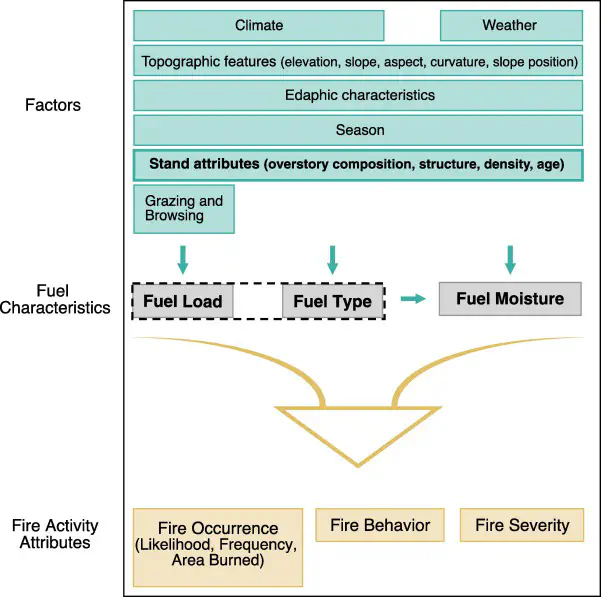Tamm review: Quaking aspen’s influence on fire occurrence, behavior, and severity
 Image credit: Kristin Nesbit
Image credit: Kristin NesbitAbstract
Quaking aspen (Populus tremuloides Michx.) stands have historically been referred to as “firebreak” forest types that can reduce fire activity, but high-intensity and high-severity fires have been observed to burn through aspen stands. Clearly, fire activity in aspen is highly variable, which may be due to the wide variation in aspen stand composition and structure and because the species occurs across wide geographic, environmental, and climatic gradients. In the western U.S., there is growing interest in promoting aspen stands within wildland-urban interface communities to reduce fire risk, but studies that refer to the low flammability of aspen stands rely on limited citations. If promoting aspen to reduce fire risk is a desirable forest management practice, consolidating the available literature is necessary to understand when, where, and how management might achieve this goal. Here, we synthesized literature and conducted a survey of forest and fire managers to assess current understanding of how fire interacts with aspen stands, as well as to examine possible factors that influence fire occurrence, behavior, and severity in aspen communities. We found evidence that the presence of aspen reduces fire occurrence, fire behavior, and fire severity, but this effect is dependent on many factors, including the percentage of aspen vs conifers in the overstory, load and type of understory fuels, weather, and season. We did not find any quantitative management guidelines on how to create, maintain, or use aspen stands to reduce fire risk. The large gap between “common knowledge” and empirical evidence regarding aspen’s ability to inhibit fire requires further research.